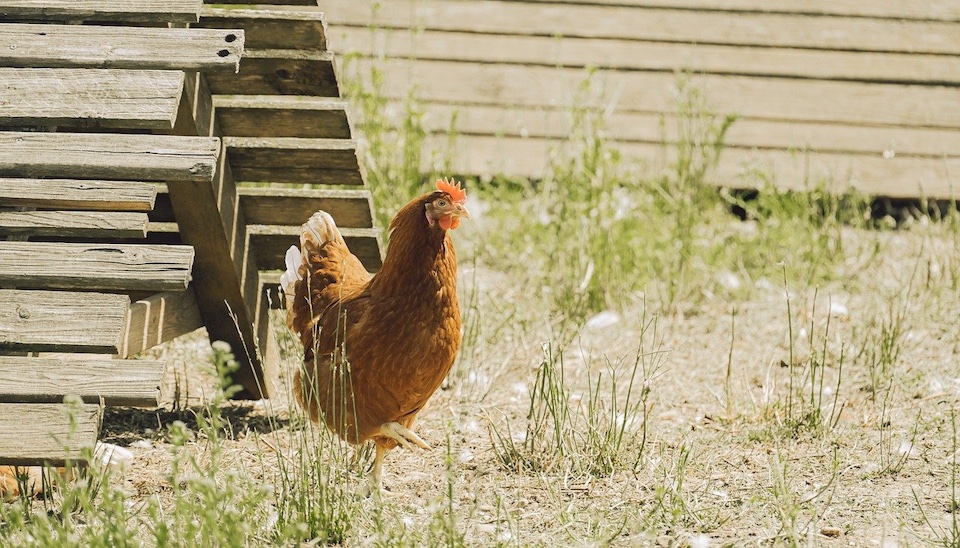Keeping the Coop Dry: How to Manage Damp Weather
Managing Damp Conditions in the Chicken Coop and Run
Damp conditions in the chicken coop and run can lead to serious health issues in your flock, from respiratory issues to bumblefoot. Whether it’s heavy rain, poor drainage or spilled water, experienced backyard chicken keepers know that moisture control is key to a happy, healthy flock. Here’s how to keep things dry, even when the weather isn’t on your side.
Key Takeaways:
-
Moisture Leads to Health Issues: Damp conditions increase the risk of respiratory infections, mouldy feed, parasites, foot problems, and reduced egg production.
-
Good Drainage Matters: Site coops on high ground, use gravel or sand bases, install trenches or ag pipes, and direct roof runoff away from the run.
-
Keep the Coop Dry: Use a sloped roof, add ventilation (without letting rain in), choose drip-free waterers to prevent spills and choose absorbent bedding.
-
Plan for Wet Weather: Provide covered areas in the run, check for water seepage, and add a dry indoor dust bath to help control mites and lice.
Why Dampness Is a Problem in the Chicken Coop
Muddy chicken runs and wet bedding don't just stink. Excess moisture in the coop and run can cause all sorts of problems for your chickens, including:
- Respiratory issues
Chickens have a sensitive respiratory system. The ammonia that results from wet, dirty chicken bedding can cause respiratory issues, as can the mould that grows in wet bedding.
- Illness and disease
Viruses and bacteria survive for longer in wet conditions, helping disease to spread within your flock. Dampness can also lead to illness-causing mouldy feed or even botulism!
- Increased parasite burdens
Worms and coccidia thrive in damp conditions, multiplying and spreading, infecting your flock.
- Lice and mites
Unless you have a sheltered dust bath in the coop, wet weather will prevent your chickens from dust bathing, causing external parasites like lice and mites to multiply.
- Foot problems
Bumblefoot and fungal infections can result from walking around on damp bedding.
- Poor laying
Stress and poor conditions will decrease egg production in your flock.
- Insect and pest problems
Flies and rodents are both attracted to a wet chicken coop, and it isn’t just the smell! A clean, dry coop is far less attractive to pests.
How to deal with damp weather in the chicken coop and run
Keeping the chicken coop and run as dry as possible, even in soggy weather, is the key to a healthy, productive flock. Here are some tips for beating damp and rainy weather.
1. Keep the Coop Dry
A damp coop quickly turns into a breeding ground for illness. Even if you can't keep the chicken run dry, a dry coop will provide your flock with an escape from the weather and a healthier environment. To keep the coop dry:
- Keep the floor dry
A dry floor is the first step to a dry coop. Ensure that run-off isn't getting into the coop, and that water isn't seeping in from below. If the coop floor is wet, consider building an elevated floor. A wooden floor is easy to construct over the existing floor, or you can build a box-frame and fill it with gravel or a layer of gravel topped with sand, for a cheap, easy floor that will help keep the coop dry.
- Provide proper ventilation
Coops should never be completely sealed, as condensation and moisture will build up inside. Even in cold weather, chicken coops require good ventilation. Roof vents, gable vents and open eaves are all good options. In warm climates, open-sided coops may also work provided there is sufficient shelter from wind.
While ventilation is essential, poorly designed ventilation can cause further issues in damp weather. If insufficiently protected, vents and open-sides can allow rain and run-off to enter the coop, particularly if the roof is poorly designed and depending on the direction of the rain. Being able to close vents can be helpful, although the best option is designing coops so that all ventilation is well-protected from wind and rain.
- Use a drip-free waterer that prevents spills
Even a small leak, or the splashes that come from using an open water container, can cause significant moisture in the coop. That is why Nipple and Drinker Cup outlets are so much better - not only do they keep water cleaner, they prevent spills and leaks, helping to keep the coop dry.
- Choose absorbent bedding
There is a surprising amount of moisture in chicken droppings, and even more if birds are coming in and out of the coop with wet feet and feathers! Yet many traditional chicken coop beddings, such as straw, are not very absorbent at all! This leads to a damp coop and all the issues that go along with it, including ammonia build-up and mould. Choosing an absorbent bedding is essential for keeping the coop clean and dry in damp conditions.
Wood shavings and hemp bedding are two of the most absorbent bedding options for the chicken coop, helping to keep things dry and reduce ammonia and mould. Rice hulls are also effective. All of these bedding options are also easy to spot-clean, which can be useful if chickens are spending a lot of time in their coop due to wet weather!
Sand is another good bedding option for helping to keep the coop dry. However, it does need to be protected from the wet, including from underneath, to be most effective, and requires very regular spot-cleaning.
Mould-prone beddings such as straw, grass clippings and cane mulch should be avoided. Chopped straw, however, is much more absorbent and a good option.
- Control run off
Roofs should be sloped so that water runs off, rather than pooling on top. Good-sized eaves and overhangs will prevent roof water from getting into the coop.
Gutters and downpipes can help direct water away from the coop (or catch and store it!). Roof run-off should be directed downslope of the coop and run.
2. Improve Drainage Around the Coop and Run
Both coops and runs should be well-drained, to prevent standing water and mud.
- Site your coop and run on high ground out of the path of run-off, if at all possible. A sunny spot for the run will help the ground to dry out more quickly after rain.
- If water is an issue, consider elevating the coop and/or run, for example by adding a floor in the coop or using dirt, gravel or sand to build up the run area.
- Add a base to the chicken run, particularly if it is exposed dirt. Gravel, coarse sand and wood chips are all affordable options and can be easily contained with a simple wooden frame. Even areas that are in the path of run-off can be significantly improved with gravel or roadbase.
- Add a drainage system. Trenches can redirect run-off in a simple drainage system, and ag pipe is also effective, although it is more work to install.
Learn more about reducing mud in the chicken run here.
3. Plan for Wet Weather
Being prepared for wet weather can also help you keep your flock healthy. If you live in the northern part of Australia, get prepared before the wet season. And in the southern states, if a week of rainy weather or flooding is predicted, it might be time to look at your set-up and get ready!
- Clean drains, gutters and trench systems to ensure water goes where it is supposed to
- Add a tarp over part of the chicken run to give chickens a dry place to escape the wet
- Build a clean, dry dust bath in a sheltered area of the coop or run. Not only will this amuse your chickens for hours, it will ensure damp weather doesn't lead to an explosion of lice and mites!
- Remove any tubs, buckets and other containers from the chicken run so that they don't end up full of water
- Fill depressions that will form puddles with gravel
- Prep some chicken toys and boredom busters so that your birds don't go stir-crazy while avoiding the rain!
Final Thoughts
Managing moisture in the coop and run is essential for keeping your flock healthy year-round. A few simple improvements—like better drainage, proper ventilation, and moisture-resistant bedding—can make all the difference. Stay ahead of the damp, and your chickens will reward you with strong eggs, healthy feet, and happy clucks!
Happy chicken keeping!
Rachael at Dine a Chook Australia



